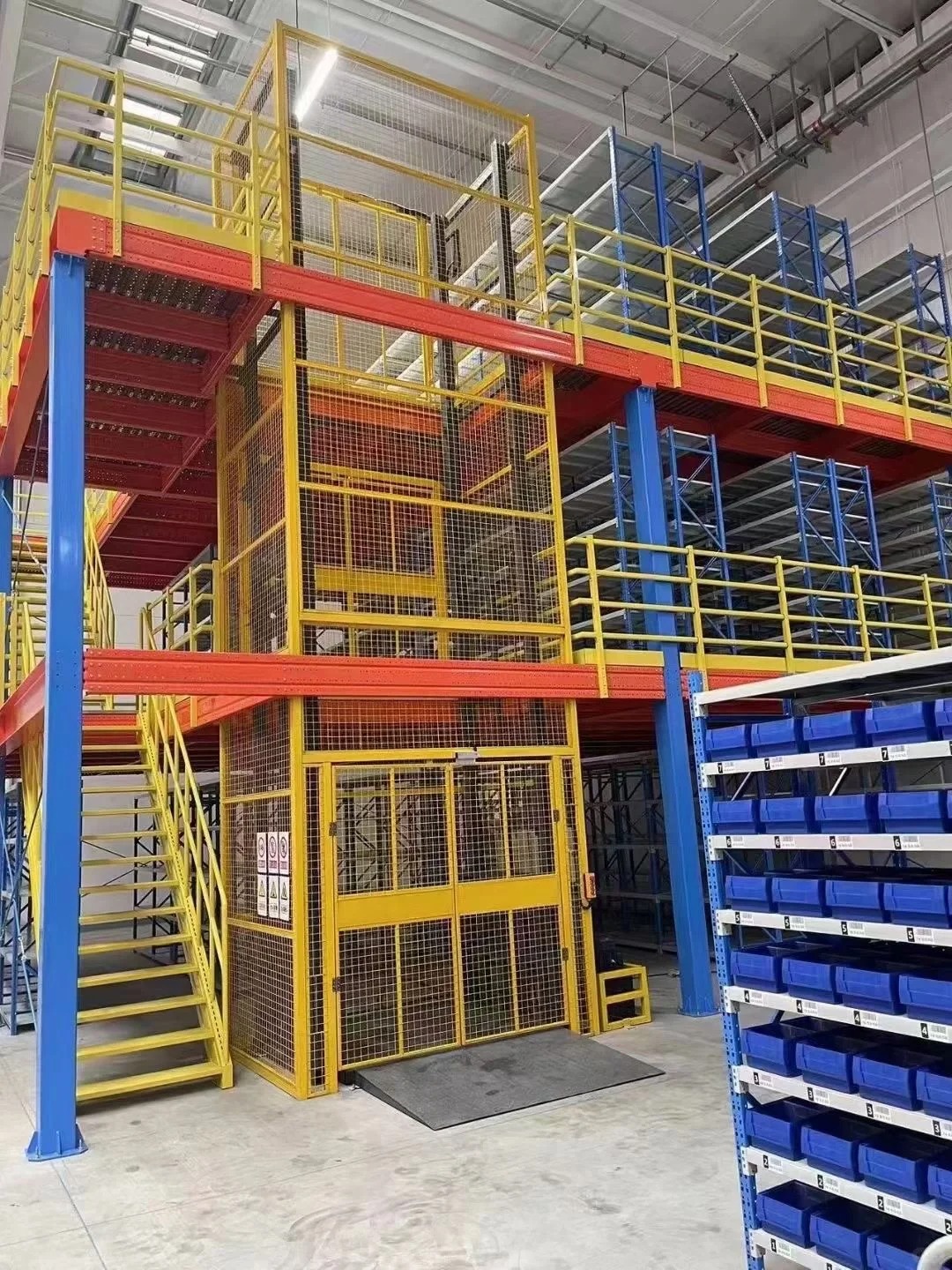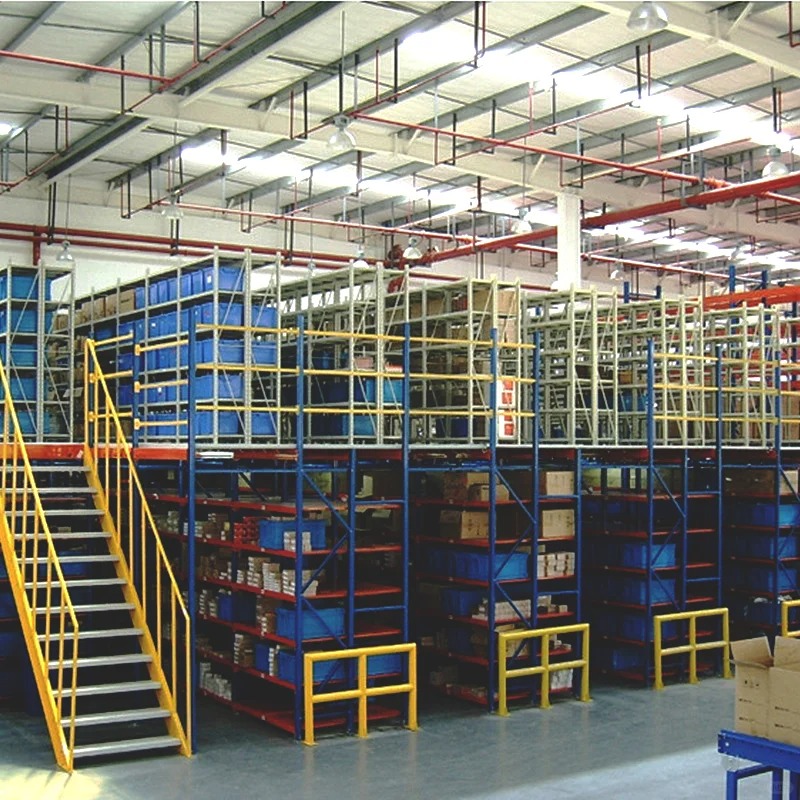In the high-stakes world of logistics, manufacturing, and distribution, efficient storage isn't just a convenience – it's a critical competitive advantage. At the heart of this efficiency lies industrial warehouse racking. These engineered structures are far more than simple metal shelves; they are sophisticated systems designed to organize, secure, and provide rapid access to vast quantities of inventory, transforming vertical space into usable, productive square footage. Choosing the right industrial warehouse racking solution directly impacts operational costs, order fulfillment speed, inventory accuracy, and workplace safety. This comprehensive guide delves deep into five essential aspects of industrial warehouse racking, empowering you to make informed decisions for your storage needs.

1. Exploring the Diverse Types of Industrial Warehouse Racking Systems
Not all storage challenges are created equal, and thankfully, neither are industrial warehouse racking solutions. Selecting the appropriate type hinges on factors like inventory characteristics (size, weight, turnover rate), available space, handling equipment, and budget.
Selective Pallet Racking: The undisputed workhorse of industrial warehouse racking. This system offers direct access to every pallet position via aisles. Its simplicity, flexibility, and relatively lower cost make it suitable for a vast range of SKUs with medium to high turnover. Ideal for warehouses storing diverse products requiring frequent picking.
Drive-In/Drive-Thru Racking: Designed for high-density storage of homogeneous products with lower turnover (e.g., FIFO or LIFO inventory like beverages, paper products). Forklifts drive directly into the rack structure to place or retrieve pallets, minimizing aisle space. Drive-Thru allows access from both ends for FIFO management, while Drive-In is accessed from one end only (LIFO). This industrial warehouse racking type significantly increases storage density but sacrifices some selectivity.
Push Back Racking: A dynamic high-density system utilizing inclined carts on nested rails. Pallets are loaded from the front, pushing previous pallets back. When retrieving, the first pallet accessed is the last one loaded (LIFO). It offers better selectivity than Drive-In while still providing excellent density – often 2-4 pallets deep per level. Perfect for medium-turnover items requiring multiple SKUs per lane.
Pallet Flow Racking: Leverages gravity for high-density, high-throughput FIFO inventory management. Pallets are loaded at the higher end of inclined rails and flow forward on wheel or roller conveyors to the picking face. This industrial warehouse racking system excels for high-volume operations with perishable goods or items requiring strict stock rotation (e.g., food & beverage, pharmaceuticals).
Cantilever Racking: Specialized for storing long, bulky, or irregularly shaped items that don't fit standard pallets – pipes, lumber, furniture, rolls of carpet, steel bars. Features long horizontal arms extending from vertical columns, eliminating front column obstructions for easy side-loading.
Mezzanine Systems: While not strictly racking, mezzanines create elevated work platforms or storage decks using the vertical space above existing operations, often integrated with industrial warehouse racking underneath or on the mezzanine level itself. Effectively doubles or triples usable floor space without expanding the building footprint.
2. Understanding Key Components & Structural Integrity
Industrial warehouse racking is a complex assembly of engineered components. Understanding these parts is crucial for safety, specification, and maintenance:
Upright Frames: The vertical backbone of the system. Typically made from heavy-gauge rolled steel, they feature punched holes or teardrop slots at regular intervals for beam connection. Frame depth (front-to-back dimension) and column gauge/thickness determine load capacity and stability. Braced with horizontal and diagonal struts.
Beams: The horizontal members that support the pallets or loads. They slot into the upright frames at various heights. Beam length and profile (height and thickness) are critical determinants of the system's load capacity per level. Safety locks secure beams to uprights.
Wire Mesh Decking or Plywood Decking: Often used on beam levels to provide a stable surface for pallets, especially if pallets are uneven or if small items are stored directly on the rack. Enhances safety by preventing pallets or products from falling through and provides fire resistance.
Row Spacers & Braces: Connect adjacent rows of racking back-to-back, significantly increasing overall system stability and resistance to lateral forces (like seismic activity or forklift impacts).
Shims: Used to level the racking system on uneven floors, ensuring proper load distribution and structural integrity.
Footplates: Anchor the base of the upright frames to the concrete floor using high-strength anchor bolts. This is critical for stability and safety, preventing rack collapse.
Guards & Column Protectors: Essential safety accessories. Post protectors (impact guards) shield uprights from forklift collisions. End-of-aisle guards and guardrails protect both the industrial warehouse racking and personnel.

3. Critical Factors for Selecting the Right Industrial Warehouse Racking
Choosing the optimal industrial warehouse racking system requires careful analysis of multiple variables:
Load Characteristics: This is paramount. What is the maximum weight per pallet? What are the dimensions (length, width, height) of the pallets or stored items? Are loads uniform or variable? How stable are the palletized loads? This data directly dictates the required beam capacity, frame strength, and decking needs.
Inventory Profile & Turnover (SKU Velocity): How many unique SKUs do you store? What is the turnover rate (FIFO, LIFO, random access)? High-turnover, multi-SKU environments favor selective racking. High-volume, low-SKU operations might prioritize density with Drive-In, Push Back, or Pallet Flow.
Warehouse Dimensions & Layout: What is the clear ceiling height? What are the overall floor dimensions and shape? Are there obstructions (columns, doors, sprinklers)? The building's cube dictates the maximum potential height and layout configuration of the industrial warehouse racking. Aisle width is determined by the type of racking and the turning radius of the material handling equipment (MHE).
Material Handling Equipment (MHE): The type of forklifts (counterbalance, reach trucks, narrow-aisle trucks, order pickers) dictates minimum aisle widths and potentially the racking height. Reach trucks enable narrower aisles than counterbalance forklifts. System selection must align with MHE capabilities.
Budget & ROI: Consider not just the initial purchase price but the total cost of ownership, including installation, potential floor preparation (leveling, reinforcing), maintenance, and the operational efficiency gains (or losses) the system will deliver. Higher-density systems may have a higher upfront cost but offer significant savings per stored pallet position.
Future Scalability & Flexibility: Will your storage needs grow or change? Select an industrial warehouse racking system that can be reconfigured, expanded, or adapted relatively easily. Selective racking generally offers the highest flexibility.
4. Safety: The Non-Negotiable Priority in Industrial Warehouse Racking
Industrial warehouse racking systems handle enormous weights at height. Safety failures can have catastrophic consequences. Implementing and enforcing rigorous safety protocols is essential:
Professional Design & Installation: Systems must be designed by qualified engineers considering all loads (inventory, seismic, snow if applicable) and installed by certified professionals according to specifications and local building codes (e.g., IBC, RMI - Rack Manufacturers Institute standards). Never modify racking without engineering approval.
Proper Loading: NEVER exceed the designated load capacity per beam level or per bay. Loads must be centered on the beams and properly positioned. Uneven or unstable pallets pose significant risks. Utilize decking where necessary.
Forklift Operation & Training: Collisions are a leading cause of rack damage and collapse. Invest in comprehensive, ongoing forklift operator training focused on safe maneuvering in rack aisles, proper load handling, and awareness of rack structures. Strict speed limits are essential.
Regular Inspections: Implement a documented, formal inspection program:
Operational Inspections: Daily/Weekly visual checks by trained warehouse staff for obvious damage, leaning frames, dislodged beams, or overloaded bays.
Expert Inspections: Annual (or more frequent based on activity level) inspections by a qualified racking safety expert (SEMA approved in the UK/EU, or equivalent) to assess structural integrity, damage severity, and anchor security.
Damage Protocol: Establish a clear, immediate protocol for reporting any damage, no matter how minor. Damaged components (bent uprights, beams, dislodged anchors) must be unloaded immediately and replaced with manufacturer-approved parts before reuse. Never attempt to straighten damaged components.
Clear Signage & Aisles: Clearly post load capacity signs on each bay. Keep aisles clear of obstructions and ensure adequate lighting throughout the racking area.
5. Maintenance, Repair, and Optimization of Industrial Warehouse Racking
Proactive maintenance ensures longevity, safety, and sustained performance of your industrial warehouse racking investment:
Systematic Inspections: As outlined in the safety section, regular inspections are the cornerstone of maintenance. Document all findings and actions taken.
Immediate Damage Repair: Promptly address any identified damage following the established protocol. Maintain a stock of critical spare parts (beams, connectors, safety locks) to minimize downtime.
Anchorage Checks: Periodically verify anchor bolt tightness and ensure no anchors have loosened or pulled out of the concrete floor. This is often part of expert inspections.
Beam & Upright Alignment: Check periodically for plumb (vertical alignment) of uprights and level of beams. Significant leaning indicates potential overload or impact damage and requires immediate investigation.
Debris Management: Keep beams and decking clear of debris, packaging materials, or spilled product that could accumulate and add unexpected load or create fire hazards.
Component Replacement: Over time, even undamaged components may show signs of wear or fatigue, especially in high-traffic areas. Plan for gradual replacement as part of lifecycle management.
Reconfiguration & Optimization: As business needs evolve, work with racking specialists to reconfigure layouts for better space utilization, improved workflow, or integration with new technologies like warehouse management systems (WMS) that optimize slotting within the industrial warehouse racking.
Load Audits: Periodically audit stored loads against the rack design specifications to ensure compliance with weight and dimension limits.
Industrial warehouse racking is far more than a storage solution; it is the fundamental infrastructure that enables modern supply chains to function efficiently and competitively. From the versatile selective rack to the high-density marvels of Push Back and Pallet Flow, each system offers unique advantages tailored to specific operational needs. Understanding the core components, the critical selection factors, and the paramount importance of safety and maintenance is essential for any warehouse or logistics manager.
Investing time and resources in selecting, installing, and properly maintaining the right industrial warehouse racking system pays significant dividends. It maximizes your valuable cubic space, accelerates order fulfillment, enhances inventory control, improves workplace safety, reduces product damage, and ultimately contributes directly to the bottom line. Partnering with reputable racking manufacturers and qualified safety inspectors ensures that this critical infrastructure remains a robust and reliable asset for years to come. In the dynamic landscape of logistics, a well-planned and meticulously maintained industrial warehouse racking system is not just an expense; it's a strategic investment in operational excellence.







